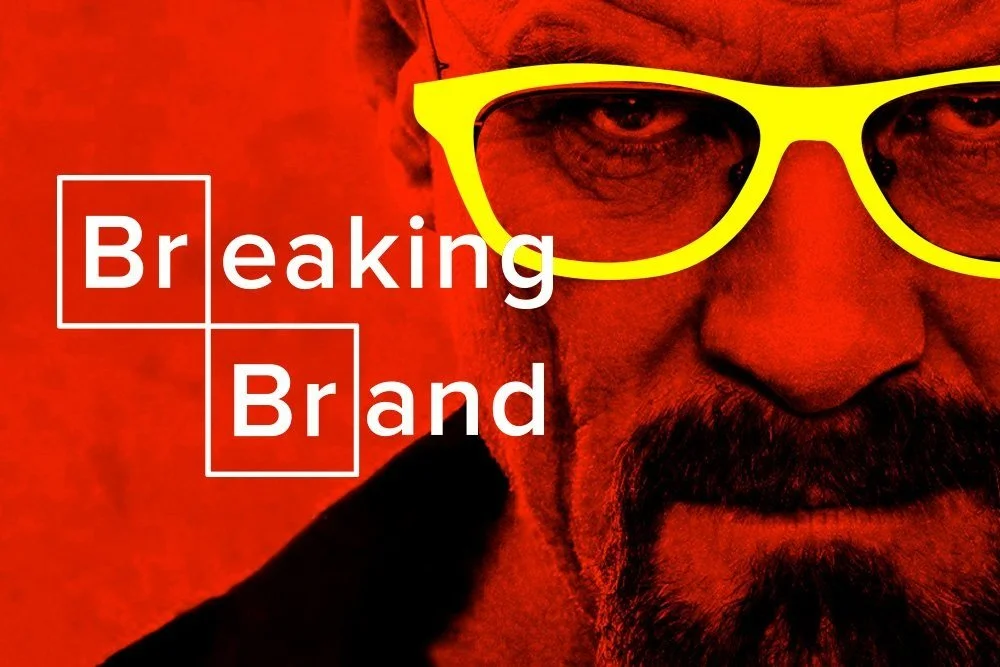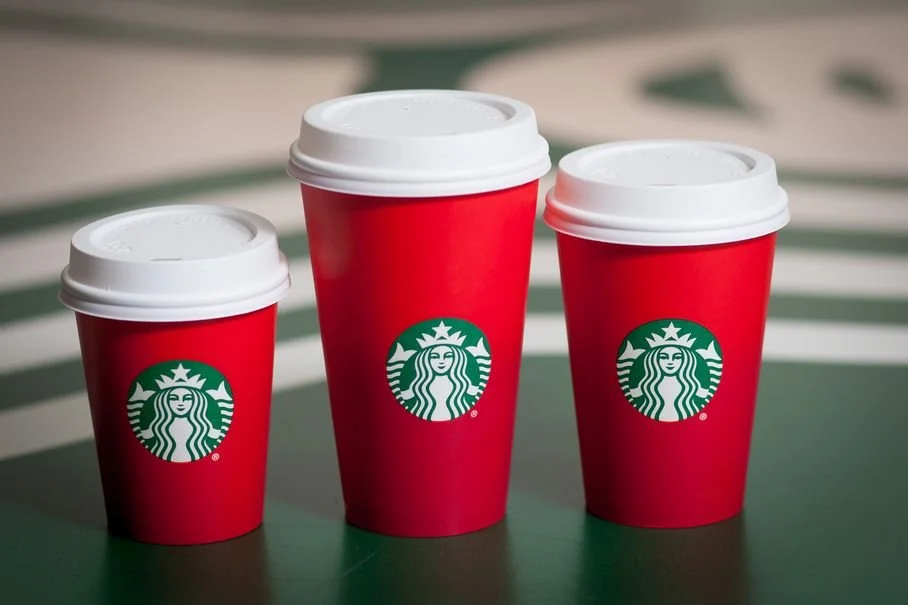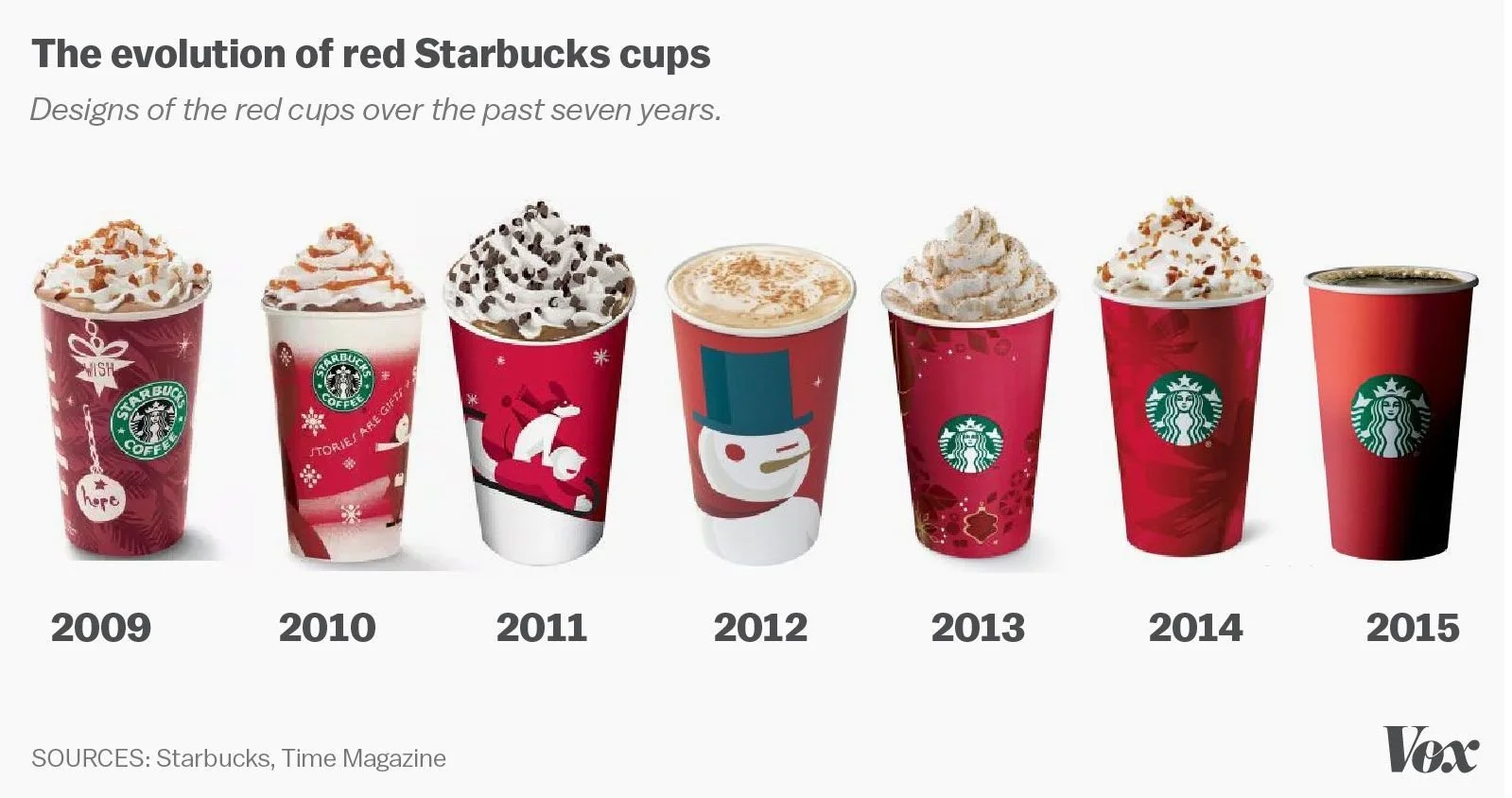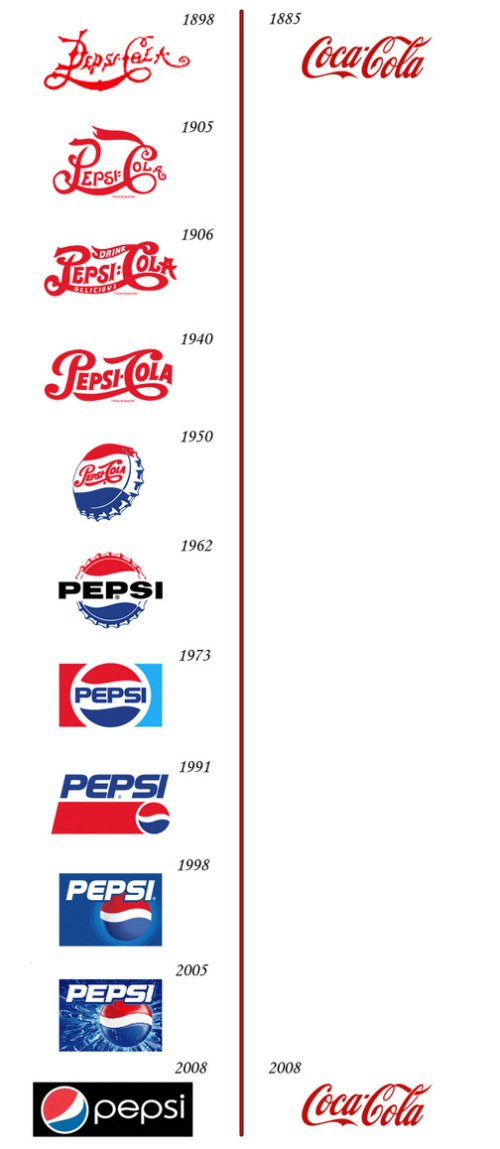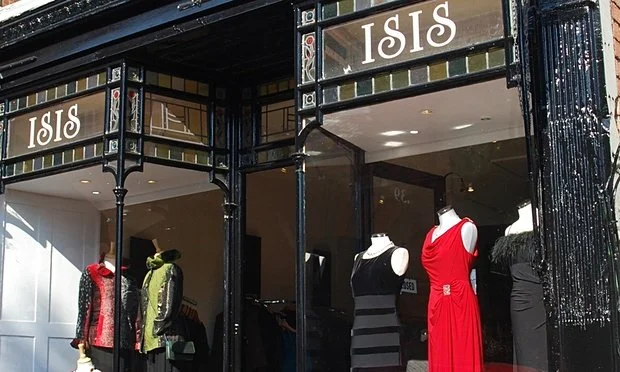Breaking brand: when advertising goes wrong
What do you do when your brand blows up in the worst way possible? We take a look through at some spectacular brand mistakes and when advertising goes wrong...
'The Great Starbucks Cup Controversy'
If you thought the Starbucks brand couldn't shove its way into your peripherals any more than it does, think again. Coffee drinkers across the globe had been screaming into the black abyss of the internet in response to Starbucks' festive coffee cups for 2015. Every year, the coffee giant promotes the yuletide season with branded Christmas-red cups featuring a new design each year. White snowflakes, snowmen, and bells and baubles have all made their mark on the famous Starbucks cup - but not this year. In 2015, Starbucks went minimal and settled on a block red.
For context, here's a timeline of how the hallowed cup has evolved over the years:
It's worth noting that Starbucks has clearly been tightening their 'cup budget' for a few years, and the attempt to appeal to a wider audience has been going strong since at least 2013. The red cup has become a symbol of Christmas, along with the Coca Cola truck and John Lewis adverts - strong seasonal advertising at its best. However, Starbucks' decision to make 2015's cup design completely plain has angered Christians across the globe, who believe the plainness is another drawn sword in the 'War on Christmas'. It wasn't long before a Twitter hashtag stormed the internet - '#MerryChristmasStarbucks' - and people are making Youtube videos to vent their frustration. Some customers are boycotting the coffee chain, while others began deliberately telling baristas their name is 'Merry Christmas' so that at least one 'Christian' feature makes it on to the cup. Christmassy or not, one thing's for sure - Starbucks has given itself the best gift ever, and all in the shape of a publicity storm over one plain red cup.
#YourTaxis #Fail #ThisWasABadIdea
What widely-used brand could launch a campaign asking for customer feedback and NOT expect some unfavourable reviews? The Victorian Taxi Association in Australia learned this lesson the hard way when they encouraged their taxi users to share stories on Twitter with the hashtag #FirstCabOffTheRank. Terrible hashtag aside, when has a taxi ride ever garnered a 'good story'? No one's entertaining party crowds with that time they sat in awkward silence for a ten minute journey in a strange and over-heated car. The Australian masses felt the same way, and the original hashtag was soon hijacked with '#YourTaxis', and dissatisfied customers began posting scathing reviews.
The campaign was launched in a bid to improve their service and beat their competitor Uber, but the miserable disaster that followed has taught us two things: one, never ask for honesty on a social media network that spares no punches. Two, sometimes a website poll will do the trick just fine.
Battle of the Fizz: Pepsi vs Coke
PepsiCo would do just about anything to make us buy their teeth-destroying carbonated bubble juice, including spending over $1 million on the rebranding of their logo in 2009. The company hired a consultant who reported back with a 27-page document after going on a 'creative break' for a month to create it. Unfortunately, the chosen design caused a backlash, with customers comparing it to the logo for Obama's presidential campaign. The gravitas placed on the simple logo change alienated customers who simply shrugged and asked for a Coke instead. One internet user made an infographic to show the evolution of both companies' logos. PepsiCo vs The Coca-Cola company: I think we know who's won.
What's in a Name? #brandfail
Some brands climb the stairway to marketing heaven and become household names, almost by accident. 'Hoover' vacuum cleaners, 'Sellotape', 'Velcro' - I feel sorry for the second guy to start marketing his new sticky tape. These trademarked brands are widely recognised parts of our vocabulary, but some company officials don't know a good thing 'til it's gone. When the marketing vice president of Chevrolet cars demanded that General Motors employees stop calling the car a 'Chevy' and instead use its full name, he was laughed out the door. Xerox, the photocopying company, have tried for decades to stop people using the term as the standard word for photocopying, and their market shares have been steadily falling - university students are still very much enamoured.
As a Cardiffian company, we know the complications of translating our work into Welsh - how do you pack the same punch in a different language? Several international companies have stumbled across this problem. Earlier this year, the American chain Taco Bell returned to Japan and didn't bother to hire a Japanese translator for their website, opting instead to use Google Translate, meaning their PR tagline, 'A Legacy is Born', translated incorrectly to 'An Obsolete Program is Born', and the text on their ingredients page that reads 'We've Got Nothing to Hide' became 'What Did We Bring Here to Hide?'. Their menu suffered too, with their 'Cheesy Fries' marketed as 'a Low Quality Fleece', and 'Crunchwrap Supreme - Beef' advertised as 'Supreme Court Beef'. That's some tasty justice.
Another problem that crops up with brand names is, well - name thieves. The long-haul creative process of choosing the perfect name for your underwear or chocolates brand might all go to waste when seven years later, an international terrorist hate group settles on the same moniker. The awkwardness of 'ISIS' has spread to the dog on Downtown Abbey, hundreds of small UK businesses, an American metal band, a Bob Dylan magazine and more. The decision lies in whether to change the name or stick it out and hope for the best, but if you're an internet-based business called Isis, your Google rankings have been obliterated to say the least.
Lies & Deceit & Eventual Defeat
Some brands and businesses shun technical jargon and eager spokespeople in favour of lying straight to their consumers' faces. In 1992, The Hoover Company promised British customers two free round-trip flights to America if they spent £100 buying Hoover products. Unfortunately, the company was totally unequipped to provide the flights but rather than issue an apology or end the promotion, the company employed an avoidance technique and became 'emotionally unavailable', leading their hopeful holiday-makers through endless hoops of filling out forms, sending forms, filling out forms, sending forms. In the end, it cost them £48,000,000 to clean up the mess. It goes without saying that the flights would've been cheaper.
In 2012, Nokia released a new technology that stopped the shakiness of filming when cycling (frankly, a health and safety issue waiting to happen). Unfortunately, they quite obviously and not-at-all-surprisingly filmed the advert using a van, a man, and a proper DSLR camera. They issued an apology after eagle-eyed viewers pointed it out and have updated their advert to remind customers it wasn't filmed with the phone they're advertising - but you already noticed that.
Can this be a media stunt, or is it a huge mistake by Nokia? Nokia have already apologised, read it here: http://conversations.nokia.com/2012/09/06/an-apology-is-due/
In summary
Brand mistakes happen for a number of fun-to-watch reasons, and with public meltdowns and customer backlashes being enough to destroy your brand identity forever, you'd better hope you came with a Plan B. Whether you're changing your name, logo, or launching an easily-hijacked Twitter campaign, send a prayer to the gods of PR and marketing first - you're gonna need it, sinner.
Want to avoid the PR pit of despair? Check out how much a logo costs, along with branding essentials for opening a bar or restaurant.

